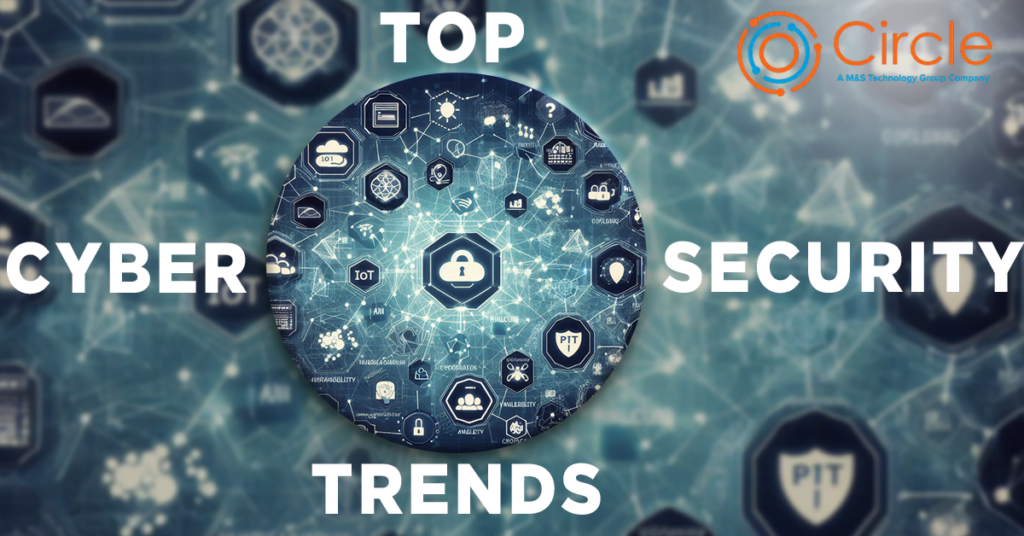
Staying ahead of cybersecurity threats is crucial for businesses in Irvine, California. As technology evolves, so do cybercriminals’ tactics, making it essential for companies to stay informed about the latest trends in cybersecurity. This comprehensive overview will delve into the top cybersecurity trends affecting businesses in Irvine and explore strategies to safeguard against potential threats.
1: Rise of Ransomware Attacks
Ransomware attacks have risen globally, and Irvine is no exception. These malicious attacks involve hackers infiltrating a company’s systems, encrypting critical data, and demand a ransom for its release. Unfortunately, even after paying the ransom, there’s no guarantee that the data will be restored fully or that the attackers won’t strike again. Businesses in Irvine must implement robust cybersecurity measures to mitigate the risk of falling victim to ransomware attacks.
2: Increased Focus on Endpoint Security
Endpoint security has become increasingly important with the proliferation of remote work and the use of personal devices for business purposes. Endpoint devices, including laptops, smartphones, and tablets, are potential entry points for cyber threats. In Irvine, businesses prioritize endpoint security by implementing comprehensive endpoint protection solutions that detect and respond to threats in real-time, regardless of the device’s location.
3: Emphasis on Cloud Security
As more businesses in Irvine migrate their operations to the cloud, ensuring the security of cloud-based infrastructure and applications has become paramount. While the cloud offers scalability and flexibility, it presents unique cybersecurity challenges, such as data breaches and unauthorized access. To address these concerns, businesses are adopting robust cloud security measures, including encryption, multi-factor authentication, and continuous monitoring to promptly detect and mitigate potential threats.
4: Growing Importance of AI-Powered Security Solutions
Artificial intelligence (AI) revolutionizes cybersecurity services in Irvine, empowering businesses to detect and respond to threats effectively. AI-powered security solutions leverage machine learning algorithms to analyze vast huge amounts of data, identify patterns, and predict potential cyber attacks before they occur. By deploying AI-driven security tools, businesses can enhance their threat detection capabilities, streamline incident response processes, and stay one step ahead of cybercriminals.
5: Focus on Employee Training and Awareness
Despite the advancements in cybersecurity technology, human error remains one of the commom causes of data breaches and cyber incidents in Irvine. To address this vulnerability, businesses are placing a greater emphasis on employee training and awareness programs. By educating employees about common cyber threats, phishing scams, and best practices for data security, businesses can significantly bring donw the risk of accidental data breaches and enhance overall cybersecurity posture.
6: Collaboration and Information Sharing
Collaboration and information sharing among Irvine businesses are essential for staying ahead of emerging threats. By sharing threat intelligence, best practices, and lessons learned from past incidents, businesses can collectively strengthen their defenses and mitigate the impact of cyber attacks. Additionally, participating in industry-specific cybersecurity forums and working groups enables businesses to stay informed about the latest trends and collaborate with peers to address common challenges.

Cybersecurity trends in Irvine are crucial for businesses looking to protect their assets, data, and reputation from evolving cyber threats. Moreover, investing in AI-powered security solutions, employee training programs, and fostering a culture of collaboration can further strengthen Irvine’s business community’s resilience against cyber threats.
If you are seeking cybersecurity solutions for your business in Irvine, look no further than Circle MSP. With our top-notch cybersecurity services, we offer cutting-edge solutions to safeguard your business from cyber threats. Contact us today to learn more about how Circle MSP can help protect your business in Irvine.
FAQs
How can businesses ensure the security of their cloud-based operations in Irvine?
Businesses can enhance cloud security by implementing encryption, multi-factor authentication, and continuous monitoring of cloud infrastructure and applications.
What steps should Irvine businesses take to ensure the security of their remote workforce?
To ensure the security of remote workers in Irvine, businesses should implement secure remote access solutions, provide training on secure remote work practices, enforce the use of VPNs, and regularly update and patch remote devices.
How frequently should businesses in Irvine conduct cybersecurity assessments and audits?
It’s recommended that businesses in Irvine conduct cybersecurity assessments and audits regularly, at least annually, or when significant changes in the organization’s IT infrastructure or operations occur.
How can Irvine businesses assess the effectiveness of their cybersecurity measures?
Irvine businesses can assess the effectiveness of their cybersecurity measures through regular security audits, penetration testing, vulnerability assessments, and benchmarking against industry best practices and standards.
